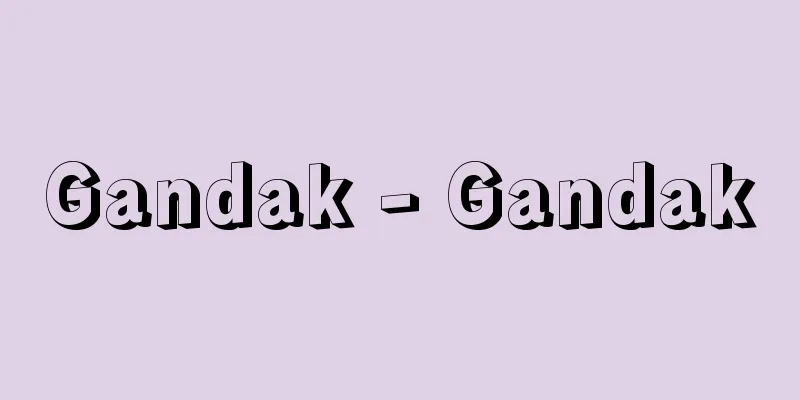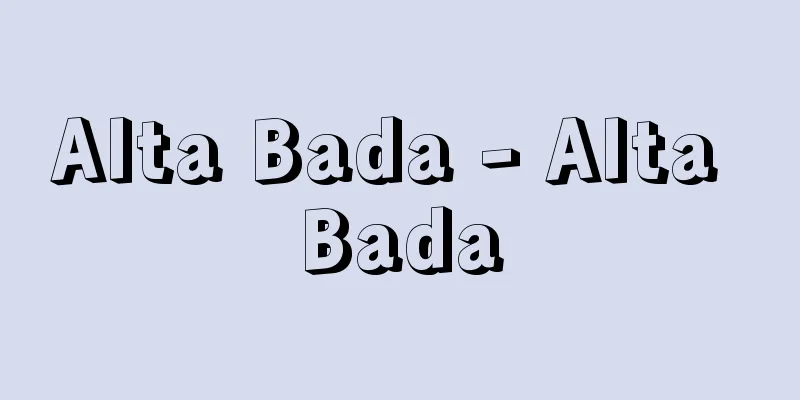Bahrain - Kingdom of Bahrain

|
A kingdom in West Asia, consisting of more than 30 islands, large and small, centered on Bahrain Island on the west coast of the Persian Gulf. Its area is 741 square kilometers. Its population is 743,000 (2006 estimate). The country's name means "two seas." The spelling "Bahrain" or "Bahrain" is more faithful to Arabic. Bahrain Island is located about 24 kilometers off the east coast of Saudi Arabia, and is about 50 kilometers north to south and 20 kilometers wide at its widest point from east to west. The capital, Manama, is located at the northeastern end of the island. To the east of this island are Muharraq Island, which has an international airport, and Sitra Island, which has a port for shipping petroleum products. The three islands are connected by bridges. The climate is characterized by the intense heat of the desert, which continues from May to October, with temperatures exceeding 40°C in midsummer and humidity reaching over 85%. The average temperature in winter from December to March is around 20°C, making it more bearable. The average annual temperature is 26.5°C, and the annual rainfall is 81 mm. [Kazuo Takahashi] historyExcavations of ruins have revealed that Bahrain has long been an important hub for transit trade between Mesopotamia and India. Some claim that the Garden of Eden described in the Bible was in Bahrain. It later came under the sphere of influence of the Persian Empire, and became Islamic in the 8th century. In the 16th century, the Portuguese began to appear in the Persian Gulf, and ruled Bahrain for about a century. In 1602, Persian Safavid dynasty Shah Abbas I (the Great) expelled the Portuguese and became the new ruler. This later became the basis for Iran's claim to sovereignty over Bahrain. However, in 1783, Persian rule was replaced by the Utub tribe led by the Khalifa family, who came from the Arabian Peninsula, and the Khalifa family began their rule over Bahrain, which continues to this day. Later, Britain, which became the ruler of the Persian Gulf, made Bahrain a protectorate at the end of the 19th century. It became an independent country in 1971 after Britain's withdrawal. [Kazuo Takahashi] Politics, Economy, and SocietyWith a constitution and parliament, Saudi Arabia had the appearance of a constitutional monarchy, but in 1975 the parliament was dissolved and the Khalifa family continued to rule as an autocratic monarchy. However, when Hamad Khalifa became emir in March 1999, he promised to promote democratization, such as establishing a bicameral parliament and granting women suffrage. In February 2002, the constitution was amended, the emir system was abolished, and the country was converted into a monarchy, with Emir Hamad becoming King. In October of the same year, parliamentary elections were held for the first time in 29 years. The National Assembly is composed of the Advisory Council, which is equivalent to the upper house, and the House of Representatives. The Advisory Council has 40 members and is appointed by the King, while the House of Representatives has 40 members and is elected by direct vote. The term of office is four years. Saudi Arabia's foreign policy is based on cooperation with the United States, the United Kingdom, and Saudi Arabia, and it is also a founding member of the Gulf Cooperation Council (GCC), a group of monarchies in the Persian Gulf that was established in 1981. Furthermore, the completion of a 25-kilometer bridge linking Saudi Arabia and Bahrain in the 1980s further strengthened ties between the two countries. During the Gulf Crisis and War of 1990-1991, Saudi Arabia participated in the multinational forces led by the US military. It also played a major role by providing bases and facilities. As for external issues, Saudi Arabia had a territorial dispute with Qatar, a member of the GCC, but this was settled by a ruling from the International Court of Justice in March 2001. The 2007 defense budget was $539 million, military service was voluntary, and the total number of troops was 8,200. There were 6,000 in the army, 700 in the navy, and 1,500 in the air force. In the past, traditional industries included agriculture, such as the cultivation of dates using the water from the oases in the north, fishing, and natural pearl harvesting. However, when Japanese cultured pearls began to appear in the 1930s, the pearl industry in the Persian Gulf, including Bahrain, suffered a devastating blow. This was further exacerbated by the decline in demand caused by the Great Depression. Instead, oil supported the Bahraini economy. In 1932, oil production began for the first time in the Arabian Peninsula countries. However, the resource is depleting, and oil production began to decline in the 1970s. Bahrain has diversified its industry into the fields of petrochemicals and aluminum refining in an effort to move away from oil. It has also focused on the financial industry, and at one time it was expected to grow into a financial center in the Middle East. However, a combination of unfavorable factors, such as the decline in oil money due to the fall in oil prices, the development of Dubai in the neighboring United Arab Emirates, and the reconstruction of Beirut, which was traditionally the financial center of the Middle East, have combined to make it difficult to be optimistic about the future. In 2008, gross domestic product (GDP) was approximately $21 billion (IMF estimate), GDP per capita was $27,247, and the economic growth rate was 6.3%. Trade volume (IMF estimate) was exports of $19.17 billion and imports of $15.64 billion. Main export items (2004) were petroleum, aluminum products, petrochemical products, and clothing, while main import items were crude oil for refining, automobiles, electrical products, machinery and transport equipment, and alumina. Exports to Japan include petroleum and aluminum products worth approximately 42.9 billion yen, while imports from Japan include automobiles and machinery products worth approximately 96.8 billion yen, resulting in a trade deficit for Bahrain. The majority of the original inhabitants are Arabs, but there are also many foreign workers from India, Pakistan, Iran, and other countries. About one-third of the total population are foreigners. The official language is Arabic. The majority of the population is Muslim, with the majority being Shiite. The ruling class, including the Khalifa family, belong to the Sunni sect, and the relationship of rulers and ruled is determined by sect. Due to factors such as rapid population growth and economic stagnation, youth unemployment has become a serious social problem. Against this backdrop, riots and bombings have continued to occur, albeit sporadic, since the Gulf War. The education system is a 6-3-3 system with 6 years of elementary school (compulsory education), 3 years of junior high school, and 3 years of high school, followed by university (4 years) and vocational training college (2 years). There are two universities: the national University of Bahrain and the Arabian Gulf University, which is under the jurisdiction of the Gulf Cooperation Council countries. [Kazuo Takahashi] "Japan External Trade Organization (JETRO) ed., 'Trade Market Series 193: Bahrain and Qatar' (1979) " ▽ "Charles D. Belgrave, translated by Shima Nika, 'The Pearl of the Persian Gulf: People and Culture of Modern Bahrain' (2006, Yuzankaku)" [References] | | | | | | | | [Additional resources] |"> Bahrain flag ©Shogakukan Illustration/Shogakukan Creative "> Bahrain Location Map Source: Shogakukan Encyclopedia Nipponica About Encyclopedia Nipponica Information | Legend |
|
西アジア、ペルシア湾西岸のバーレーン島を中心とする大小30余りの島々からなる王国。面積は741平方キロメートル。人口74万3000(2006推計)。国名は「二つの海」を意味している。「バハレーン」あるいは「バフレーン」とする表記のほうがアラビア語には忠実である。バーレーン島は、サウジアラビアの東の沖合い約24キロメートルに位置し、南北約50キロメートル、東西の最大幅20キロメートルの島で、北東端に首都のマナーマがある。この島の東に国際空港のあるムハッラク島と石油製品の積出し港のあるシトラ島がある。3島は架橋によって結ばれている。気候は、砂漠地帯特有の酷暑を伴う夏が5月から10月まで続き、真夏の気温は40℃を超え、湿度は85%以上に達する。12~3月の冬は平均気温が20℃前後でしのぎやすい。年平均気温は26.5℃、年降水量は81ミリメートルである。 [高橋和夫] 歴史遺跡の発掘調査によって古くからメソポタミアとインドを結ぶ中継貿易の重要な拠点であったことが知られてきた。聖書に記述のあるエデンの園はバーレーンであったという主張も一部ではなされている。その後ペルシア帝国の勢力圏に入るなどの経緯があって8世紀にはイスラム化した。16世紀に入るとポルトガル人がペルシア湾に姿を現すようになり、約1世紀にわたってバーレーンを支配した。 1602年にペルシアのサファビー朝のアッバース1世(大王)がポルトガル人を追放して新しい支配者となった。これが後にイランがバーレーンへの領有権を主張する根拠となった。しかしペルシア人の支配は、1783年にアラビア半島からやってきたハリーファ家に率いられたウトゥーブ部族にとってかわられ、今日まで続くハリーファ家のバーレーン支配が始まった。その後ペルシア湾の覇者となったイギリスが、19世紀末にバーレーンを保護領とした。そして1971年にイギリスの撤退によって独立国となった。 [高橋和夫] 政治・経済・社会憲法や議会をもち、いちおうは立憲君主制の体裁をとっていたが、1975年に議会は解散され、その後はハリーファ家の専制政治が続いた。しかし、1999年3月にハマド・ハリーファが首長につくと、二院制議会の設置、女性の参政権などの民主化推進を約束した。2002年2月には憲法を改正、首長制を廃止し、王制に移行、首長のハマドは国王となった。さらに同年10月、29年ぶりに国会議員選挙が行われた。国民議会は上院にあたる諮問院と下院で構成される。諮問院の議員定数は40で国王が任命、下院は議員定数40で直接選挙により選出される。任期は4年。外交は、アメリカ、イギリス、サウジアラビアとの協調が基本であり、1981年に発足したペルシア湾岸の君主国家のグループである湾岸協力会議(GCC)の創設メンバーでもある。また1980年代にサウジアラビアとバーレーンを結ぶ全長25キロメートルの架橋が完成して両国の関係はいっそう密接になった。 1990~1991年の湾岸危機・戦争ではアメリカ軍を中心とする多国籍軍に参加した。また基地や施設を提供して大きな役割を果たした。対外問題としてはGCCのメンバーであるカタールと領土紛争を抱えていたが、2001年3月国際司法裁判所の判決を受けて決着した。2007年の国防予算は5億3900万ドル、兵役は志願制で総兵力は8200。陸軍6000、海軍700、空軍1500となっている。 かつては北部におけるオアシスの水を利用したナツメヤシ栽培などの農業および漁業、天然真珠採取などが伝統的な産業であった。しかし1930年代に日本製の養殖真珠が出回るようになるとバーレーンをはじめとするペルシア湾の真珠産業は壊滅的な打撃を受けた。さらに当時の世界恐慌による需要の低下がこれに追い討ちをかけた。かわってバーレーン経済を支えたのが石油であった。1932年にアラビア半島諸国では初めての石油生産が始まった。しかしその資源は枯渇しつつあり、石油生産は1970年代には低下を始めた。バーレーンは脱石油を目ざして石油化学やアルミ精錬の分野へと産業の多様化を進めてきた。金融業にも力を入れ、一時は中東の金融センターへ成長するのではないかという期待がかけられた。しかし、石油価格の低下によるオイル・マネーの減少、近隣国アラブ首長国連邦のドバイの発展、そして伝統的に中東の金融センターであったベイルートの復興などの不利な要因が重なり合い、将来を楽観できないのが現状である。 2008年の国内総生産(GDP)は約210億ドル(IMF推計)、1人当りGDPは2万7247ドル、経済成長率は6.3%である。貿易額(IMF推計)は輸出191億7000万ドル、輸入156億4000万ドル。おもな輸出品目(2004)は石油、アルミニウム製品、石油化学製品、衣料品、おもな輸入品目は精製用原油、自動車、電気製品、機械・輸送機器、アルミナである。 日本への輸出は石油、アルミニウム製品など約429億円、日本からの輸入は自動車、機械製品など約968億円で、バーレーンの輸入超過になっている。 もともとの住民の大半はアラブ人であるが、インド、パキスタン、イランなどからの外国人労働者も多く働いている。総人口の3分の1程度は外国人である。公用語はアラビア語。人口の大半はイスラム教徒であり、その多数派はシーア派である。ハリーファ家などの支配層はスンニー派に属しており、支配・被支配の関係が宗派で規定されたかたちになっている。 人口の急増、経済の停滞などの要因によって若年層の失業が重大な社会問題となっている。そうした状況を背景に湾岸戦争後には散発的ながら暴動や爆破事件が続いている。 教育制度は小学校6年(義務教育)、中学校3年、高等学校3年の六・三・三制で、その上に大学(4年)、職業訓練専門学校(2年)がある。大学は国立のバーレーン大学、湾岸協力会議諸国管轄のアラビアン・ガルフ大学がある。 [高橋和夫] 『日本貿易振興会編・刊『貿易市場シリーズ193 バハレーン・カタル』(1979)』▽『チャールズ・D・ベルグレイヴ著、二海志摩訳『ペルシア湾の真珠――近代バーレーンの人と文化』(2006・雄山閣)』 [参照項目] | | | | | | | | [補完資料] |"> バーレーンの国旗 ©Shogakukan 作図/小学館クリエイティブ"> バーレーン位置図 出典 小学館 日本大百科全書(ニッポニカ)日本大百科全書(ニッポニカ)について 情報 | 凡例 |
<<: Hallenkirche (English spelling)
Recommend
Kusazoshi - Kusazoshi
A genre of novels from the Edo period. A general ...
Lacandon - Lacandon (English spelling)
Descendants of the Maya who live in the tropical r...
Mulberry - Morus bombycis; mulberry
It is a deciduous tall tree of the mulberry family...
Misaka [town] - Misaka
A former town in Higashiyatsushiro County, central...
Castanet - Castanet (English spelling) castanet English
A idiophone that produces sound by striking woode...
Dewantara
…Indonesian nationalist and leader of the nationa...
Showa Restoration
A term that called for national reform and domest...
Indicator organisms
Organisms can only live within a certain range of...
Prince Hozumi
? -715(Spirit Turtle 1) A Man'yo poet from the...
Decubitus - Decubitus
It is also called caisson sickness, diver's di...
Lawn bowls
A game in which players roll a ball on a grass cou...
Langendijk, P.
… In the following 18th century, poets and writer...
Lewis, WH
…This demonstrated that animal cells have the abi...
Isotsuji - Isotsuji
An evergreen shrub of the Ericaceae family that gr...
Caecilius - Caecilius
…A Christian sect that arose in North Africa in t...









